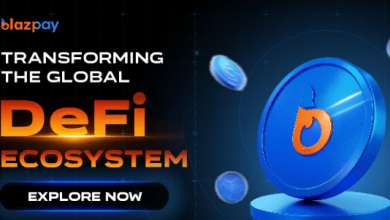Balancing Agricultural Pricing: The Role of Innovation in Sustainability and Affordability

In this modern era, Agricultural price optimization is a complex challenge that requires balancing farmer sustainability with consumer affordability. In his research, Ankit Khandelwal explores how digital advancements, market-driven pricing strategies, and evolving risk management tools are transforming agricultural pricing systems. This article delves into the innovations driving this shift and their implications for the future of food systems.
Digital Technologies Reshaping Pricing Models
The rise of digital tools has revolutionized agricultural pricing, allowing farmers to make data-driven decisions. Artificial intelligence, predictive analytics, and blockchain technology enable real-time price monitoring and forecasting. These advancements help mitigate market uncertainties by providing farmers with accurate demand projections, allowing for more stable pricing mechanisms. Additionally, mobile-based platforms and digital marketplaces are empowering small-scale farmers by giving them direct access to consumers and fair pricing structures.
Dynamic and Demand-Based Pricing Strategies
Traditional pricing methods often fail to accommodate fluctuating market conditions. Dynamic pricing models leverage real-time data to adjust prices based on demand, inventory levels, and external factors such as climate conditions. These strategies not only increase profitability but also ensure fair pricing for consumers, reducing excessive market volatility. Furthermore, cloud-based pricing tools now enable automated adjustments based on seasonality and historical price trends, helping farmers optimize revenue while maintaining market competitiveness.
Supply Chain Innovations and Price Efficiency
The agricultural supply chain is a critical determinant of pricing. Smart logistics, IoT-enabled storage systems, and blockchain tracking have improved transparency and efficiency. These innovations reduce post-harvest losses and help stabilize prices by ensuring optimal distribution. Additionally, digital trade platforms are connecting farmers directly with buyers, minimizing intermediaries and improving profit margins. Moreover, the integration of predictive logistics and AI-powered demand forecasting is helping optimize transportation routes and reduce food waste, leading to better price stabilization.
Risk Management Through Predictive Analytics
Market uncertainties and climate variability pose significant risks to agricultural pricing. Advanced risk management tools, such as weather derivatives and index-based insurance, allow farmers to hedge against potential losses. Machine learning models analyze historical data to predict price fluctuations, enabling farmers to make proactive pricing decisions that safeguard their revenues. Additionally, real-time weather monitoring and automated insurance claim processing through blockchain technology are further enhancing risk mitigation measures, ensuring financial stability for farmers.
Sustainable Farming and Price Stability
Sustainability is becoming an integral part of agricultural pricing. The adoption of climate-resilient crops, precision farming, and eco-friendly production methods influences price structuring. Consumers are increasingly willing to pay a premium for sustainably produced goods, encouraging the industry to integrate environmental considerations into pricing frameworks. Circular economy principles, such as resource-efficient farming, are shaping long-term pricing strategies. Furthermore, carbon credit trading and green certifications are emerging as additional pricing factors, incentivizing sustainable agricultural practices while ensuring profitability.
Government Interventions and Market Regulations
Governments play a crucial role in agricultural pricing by implementing policies that stabilize markets. Digital payment platforms for subsidies, blockchain-based verification systems, and trade regulations are modernizing policy frameworks. While interventions like Minimum Support Prices (MSP) provide a safety net for farmers, flexible pricing mechanisms are being introduced to ensure market responsiveness while maintaining affordability. Additionally, regulatory frameworks are now incorporating AI-driven monitoring systems to ensure fair pricing practices, detect fraud, and enhance market transparency.
Future Outlook: A Data-Driven Agricultural Economy
Looking ahead, the agricultural sector is moving toward a fully integrated digital ecosystem where pricing decisions are driven by real-time data. The expansion of smart farming, digital trade platforms, and AI-powered pricing models will continue to reshape market dynamics. However, achieving widespread adoption of these innovations requires investment in digital infrastructure, farmer education, and policy support. Moreover, the evolution of decentralized finance (DeFi) solutions in agriculture is opening new avenues for microfinance, enabling small-scale farmers to participate in global agricultural trade and secure better pricing agreements.
In conclusion, the transformation of agricultural pricing strategies, as outlined in Ankit Khandelwal’s research, highlights the critical intersection of technology, sustainability, and economic efficiency. As the industry navigates these changes, innovation will remain the key driver in ensuring a balanced pricing model that benefits both producers and consumers while enhancing overall market resilience.

Source: Balancing Agricultural Pricing: The Role of Innovation in Sustainability and Affordability

